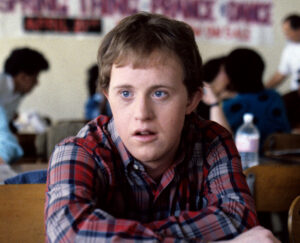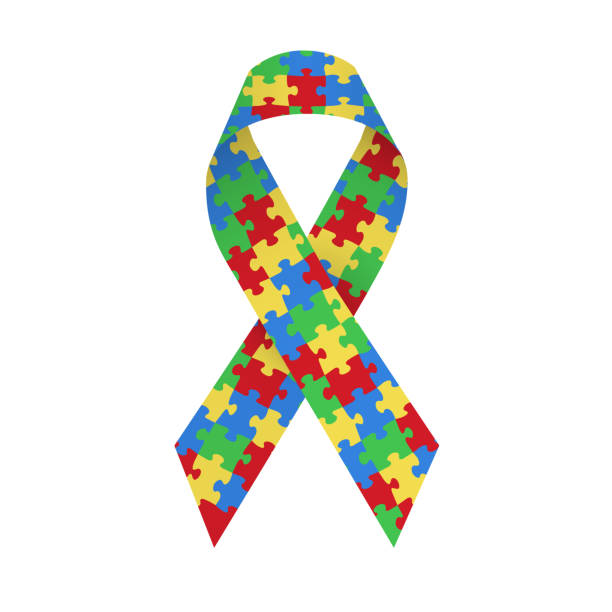
Courtesy of Roadside Attractions.
Autism. Down Syndrome. Mental Illness. At one time these disabilities found themselves being stigmatized and treated like the plague. However, in more recent times, these issues have been brought to light through the introductions of characters in media with said disabilities, such as Julia, Sesame Street’s first autistic character, or the character Zak from The Peanut Butter Falcon, one of the first films to star an actor with down syndrome. However, even with this surge of representation of disabilities in media and art, not only is the percentage of actors in media just 3.1% (over 95% of these characters are portrayed by non-disabled actors), but one big underlying problem has been consistent in most portrayals of these kinds of characters that should be rectified and taken seriously. As someone who has lived with autism, specifically PDD (Pervasive Developmental Disorder) for 18 years and has learned to overcome all the traits and obstacles, from not speaking until I was 5 years old and being put in special education classes, to graduating high school through normal classes and being able to interact and become the person that everyone knows and loves, I have been through a lot to overcome my diagnosis. Because of all the things that I have overcome, I’ve learned that people with disabilities aren’t all the same, and that most of these people don’t fall into any of the stereotypical categories that media and art have molded them into. Knowing this, I argue that characters in media who are depicted as having disabilities, whether it be the happy go lucky and retarded person with down syndrome, or the hyper intelligent and know it all autistic genius, are nothing more than inaccurate, harmful stereotypes that should be shamed, and that the film and television industries should portray these characters accurately with the help of people who live with these disabilities.

Courtesy of Paramount Pictures.
People living with mental illness and down syndrome frequently see themselves stereotyped whenever a character with said disabilities is depicted in entertainment media. While more accurate portrayals are being seen in films and television, Hollywood has yet to completely abandon the five most common stereotypes that are seen as hurtful and inaccurate by those living with these problems. In their blog entry, world-renowned disability service organization Aruma label the five harmful stereotypes as the villain, the superhero, the butt of the joke, the victim, and eternally innocent. The blog entry then highlights various examples of each typecast and call out their faults, describing the victim’s “where a person is seen as pitiful and helpless, just because they have a disability” 1 and being used to “sympathy from the audience – rather than genuine compassion” 2, and the eternally innocent characters as “Often the naïve and sweet character with a disability, reveals the flaws of their ‘normal’ adult peers – leading to them finding redemption” 3, and reinforcing patronizing concepts that just aren’t true.

Courtesy of ABC Network.
Autism also never seems to be properly showcased in the media, with characters who are depicted as autistic only being shown as what the Organization for Autism Research describe as “The “autistic savant,” a person with autism who has exceptional skill or brilliance in some limited field” 4 in their newsletter named the Oaracle. The newsletter notes three prime examples of this stereotype, Raymond Babbitt from Rain Man, Sheldon Cooper from The Big Bang Theory, and most notably, Dr. Shaun Murphy from The Good Doctor. These three characters are depicted as super intelligent men who have unprecedented knowledge through what is known as ‘savant syndrome’, which while accurate, only represents “about 10 percent of individuals on the autism spectrum”5. Individuals who’ve been part of the spectrum find themselves despising these characters, as they do not relate to them at all. Most people on the spectrum don’t have the same traits as those with savant syndrome. Some who are on the spectrum just live life normally like most people, while on the other side of the range there are those who can’t speak or be sociable, needing to be helped by caretakers just to function through their life, yet that side of the spectrum is rarely visited in the entertainment industry.

Courtesy of ABC.
If disabled actors were hired to play disabled character in film and tv, the communities who know what it is like to love with these struggles would actually feel truly represented and the injustices faced towards these people would most certainly go down. One famous example of the entertainment industry gaining perspective and casting a person with disabilities that made a change in how people view those that live with them is Chris Burke, whose Down Syndrome diagnosis didn’t stop him from achieving his dreams of becoming an actor. He was cast on the show “Life Goes On” and used his platform to help those who were just like him in overcoming their obstacles.

Courtesy of Smithsonian Magazine.
Another famous example of the entertainment industry gathering perspectives from experts and people who live with disabilities to create an accurate portrayal of a character with disabilities is the creation of Julia, the first autistic Muppet from Sesame Street. Her incorporation into the show offered all new perspectives into living with autism and allowed those who live with autism to have someone to relate to. Pulitzer-winning journalist Ron Suskind wrote a journal article for “The Smithsonian” presenting the chronology from her conception in the late 1990’s to her television debut in April 2017, noting all the different consults with experts and those who live with autism in making sure that this character would be represented accurately. The research and care paid off, as Suskind revealed, “The most impressive evidence of Julia’s power came from people with autism, who saw something they’d never seen before: a reflection of themselves. Letters and emails flooded Sesame Street from across America and around the world” 6 One very heartwarming letter among many, read, “I am scared of noises. I don’t like my hair to bother me. What I say doesn’t always make sense to other people. I hope you like ‘Sesame Street,’ I hope you meet lots of kind, good people there. I will watch you on TV. And maybe I will get to meet you some day . . . but only if that’s okay with you.” 7. It’s thanks to these incredible people that Julia has become one of the most popular and adored characters on Sesame Street, paving the way for more natural and accurate representations of those on the spectrum in the television industry and hopefully leads to films that see the spectrum showcased the way that it deserves to be displayed.
While most that live with these disabilities believe they should be more accurately represented, others seem to not care, believing that these characters existing at all is good enough, an argument that seems very hypocritical considering the backlash that movie studios face when a film misrepresents a person of color, or mocks homosexual and non-binary characters. Whenever it comes to gay or non-binary people, if a character is misrepresented, public outcry around the internet occurs. In his journal article, freelance journalist Jacob Sarkisian berates films such as Bruno and Zoolander 2 for making a mockery out of gay and non-binary persons as the butt of the joke, even referencing the fact that “A petition was actually made to boycott this movie, with 25,000 people signing” 8. The fact that people are making petitions for the misrepresentation of homosexual and non-binary people, yet don’t do the same when it comes to those with disabilities offends and insults disabled people.
Another argument that trivializes the importance of accurate representation is that these character portrayals aren’t doing any harm and that no one should be offended, but just like how stereotypes of blacks as living in the ghettos and Mexicans as drug lords hurts the perception of those populations, the same goes for those with autism and down syndrome. In his article, renowned tutor Dominic Windram argues that “Inaccurate reporting, and inaccurate media discussions about autism, have in the past, resulted in more ignorance and intolerance. As people were not properly informed about the condition, they tended to label individuals with autism as ‘ lazy’, ‘ stupid’, ‘ badly behaved’ or the product of ‘poor parenting’”9. The fight for accurate representation of disabled people should be just as important as the fight of accurate representation of colored people and those who are part of the LGBTQ+ community, yet those groups seem to override and become the focal point of these movements, leaving the disabled community in the dust with no one to back them up.
Whenever anyone makes a case that all people with autism are emotionally destructive and mentally challenged, I always ask them “If I told you that I myself am autistic, would you believe me?”, to which then I always get the same response, “No”. Every time that I tell them that they are wrong, and that I do have autism, they without fail tell me that I must be lying, and that I don’t act autistic. That always puts a smile on my face, because it tells me that I’ve come a long way from how I used to be, but it also makes me slightly mad because they expected me to behave like the autistic people that they see in movies and in television shows.
Anytime I think about that, the most prominent memory that pops into my head is speaking with my mom about representation of the spectrum. As I sat in the living room with my dog Logan, an advertisement popped up on the TV screen while my mom and sister were watching “Grey’s Anatomy”. The commercial promoted a brand-new show premiering called “The Good Doctor”. My mother began to talk to me about how she looks forward to watching the show, pointing out that the main character was revealed to have Autism. She then asked me how I felt about a major show having a main character who was autistic. When she asked me that question, I had a thought that she probably expects me to say that I’m super happy to see someone who’s just like me on TV, but I wanted to see if he truly was like me, or if it’s just a sham. I got on my phone and began to look up the details of the show, specifically who the main actor was and what the plot for the show was going to be. When I found out that the starring actor, Freddie Highmore, wasn’t autistic, I rolled my eyes and said to myself of course he isn’t autistic. I then investigated the plot and realized that the show was just another medical drama but with an ‘autistic’ lead. I got really annoyed, as I am sick of all these dramas surrounding the medical field. I responded by telling her that I don’t really like the show and its main character. She then went back to talking to my sister in the meanwhile, while I continued to pet my dog on the couch.
Later, my mom called me over for lunch and sat down with me while we watched her novellas. She then asked me what specifically did I not like about the show, as she was curious as to why I didn’t have a positive reaction to the fact that a major network has an autistic character as a lead in a show. I then went ahead and explained to her that I could care less about this autistic lead because the actor playing him isn’t actually autistic and therefore does not know the real struggles of living with it. I continued telling her how even if he was autistic, seeing the same stereotype of the autistic person being a super genius who’s socially awkward and knows about the specifics of a bunch of unnecessary things over and over again really pisses me off, as I’ve never considered myself to be a know-it-all super genius. I’ve worked too hard to become socially developed to see people like that on TV. She was astounded by what I had to say and hugged me, and as we finished our meal, I began to think about how I’d like to give my perspective on these characters and how cool it would be to spread the message that not all those with autism are know-it-alls or developmentally challenged. Some people are just normal and live their lives just like everyone else, just like me.
- “Disability stereotypes in the media.” Aruma Disability Services. 14 August 2020. https://www.aruma.com.au/about-us/blog/run-forest-run-disability-stereotypes-in- the-media/ ↵
- “Disability stereotypes in the media.” Aruma Disability Services. 14 August 2020. https://www.aruma.com.au/about-us/blog/run-forest-run-disability-stereotypes-in- the-media/ ↵
- “Disability stereotypes in the media.” Aruma Disability Services. 14 August 2020. https://www.aruma.com.au/about-us/blog/run-forest-run-disability-stereotypes-in- the-media/ ↵
- Gambacurta, Corinne. “News & Events.” Organization for Autism Research, 4 Oct. 2022, https://researchautism.org/autism-representation-in-the media/# ~:text=The%20%E2%80%9Cautistic%20savant%2C%E2%80%9D%20a,have%20followed%20a%20similar%20theme. ↵
- Gambacurta, Corinne. “News & Events.” Organization for Autism Research, 4 Oct. 2022, https://researchautism.org/autism-representation-in-the media/# ~:text=The%20%E2%80%9Cautistic%20savant%2C%E2%80%9D%20a,have%20followed%20a%20similar%20theme. ↵
- Suskind, Ron. “THE CHAMPION: Sesame Street & Julia Social Progress.” Smithsonian, vol. 48, no. 8, Dec. 2017, pp. 48–84. ↵
- Suskind, Ron. “THE CHAMPION: Sesame Street & Julia Social Progress.” Smithsonian, vol. 48, no. 8, Dec. 2017, pp. 48–84. ↵
- Sarkisian, Jacob. “9 Movies That Got Their LGBTQ Representation Completely Wrong.” Insider, Insider, 18 June 2020, https://www.insider.com/movies-that-got-lgbtq– representation-wrong-2020-6#zoolander-2-2016-9. ↵
- Windram, Dominic. “How Autism Is Misrepresented in the Mainstream Media.” LinkedIn, 20 Aug. 2022, https://www.linkedin.com/pulse/how-autism-misrepresented-media-dominic-windram#:~:text=Inaccurate%20reporting%2C%20and%20inaccurate%20media,product%20of”%20poor%20parenting’. ↵



1 comment
Mariana Chamorro
Your publication offers a thoughtful perspective on how disabilities are portrayed in media. I appreciate your call for more accurate representation, especially by casting disabled actors. Your personal experiences add depth to your argument! Good job!